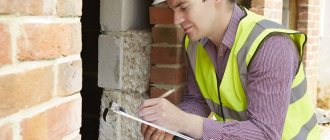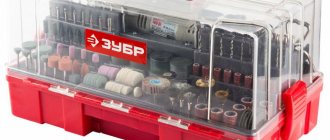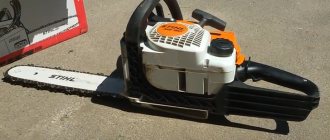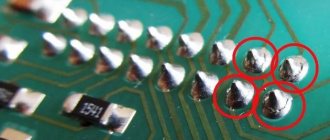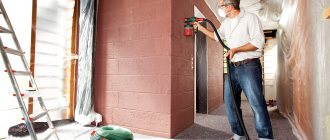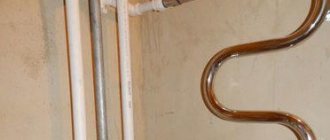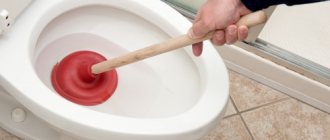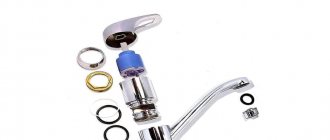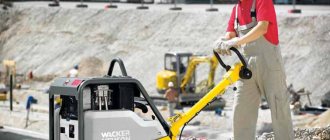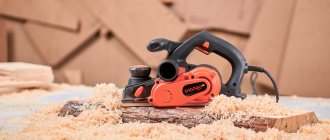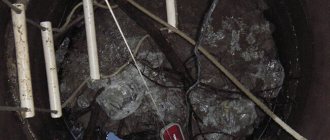All materials existing in nature differ in their electrical properties. Thus, from the entire variety of physical substances, dielectric materials and conductors of electric current are separated into separate groups.
What are conductors?
A conductor is a material whose peculiarity is the presence of freely moving charged particles that are distributed throughout the substance.
Substances that conduct electric current are molten metals and the metals themselves, undistilled water, salt solution, moist soil, and the human body.
Metal is the best conductor of electric current. Also among non-metals there are good conductors, for example carbon.
All conductors of electric current that exist in nature are characterized by two properties:
- resistance indicator;
- electrical conductivity indicator.
Resistance arises due to the fact that electrons, when moving, collide with atoms and ions, which are a kind of obstacle.
That is why conductors are assigned an electrical resistance characteristic. The reciprocal of resistance is electrical conductivity. Electrical conductivity is the characteristic (ability) of a physical substance to conduct current. Therefore, the properties of a reliable conductor are low resistance to the flow of moving electrons and, consequently, high electrical conductivity. That is, the best conductor is characterized by a high conductivity index.
For example, cable products: copper cable has greater electrical conductivity compared to aluminum.
What are dielectrics?
Dielectrics are physical substances in which there are no electrical charges at low temperatures. The composition of such substances includes only atoms of a neutral charge and molecules. The charges of a neutral atom have a close connection with each other, and therefore are deprived of the possibility of free movement throughout the substance.
The best dielectric is gas. Other non-conducting materials include glass, porcelain, ceramic products, as well as rubber, cardboard, dry wood, resins and plastics.
Dielectric objects are insulators whose properties mainly depend on the state of the surrounding atmosphere. For example, at high humidity, some dielectric materials partially lose their properties.
Conductors and dielectrics are widely used in electrical engineering to solve various problems.
For example, all cable and wire products are made of metals, usually copper or aluminum. The sheath of wires and cables is polymer, as are the plugs of all electrical appliances. Polymers are excellent dielectrics that do not allow charged particles to pass through.
Silver, gold and platinum products are very good conductors. But their negative characteristic, which limits their use, is their very high cost.
Therefore, such substances are used in areas where quality is much more important than the price paid for it (defense industry and space).
Copper and aluminum products are also good conductors and are not so expensive. Consequently, the use of copper and aluminum wires is widespread.
Tungsten and molybdenum conductors have less good properties, so they are mainly used in incandescent light bulbs and high-temperature heating elements. Poor electrical conductivity can significantly impair the operation of an electrical circuit.
Dielectrics also differ in their characteristics and properties. For example, some dielectric materials also contain free electrical charges, albeit in small quantities. Free charges arise due to thermal vibrations of electrons, i.e. An increase in temperature still, in some cases, provokes the separation of electrons from the nucleus, which reduces the insulating properties of the material. Some insulators are characterized by a large number of “stripped” electrons, which indicates poor insulating properties.
The best dielectric is complete vacuum, which is very difficult to achieve on planet Earth.
Fully purified water also has high dielectric properties, but this does not even exist in reality. It is worth remembering that the presence of any impurities in the liquid gives it the properties of a conductor.
The main criterion for the quality of any dielectric material is the degree of compliance with the functions assigned to it in a specific electrical circuit. For example, if the properties of the dielectric are such that the current leakage is very insignificant and does not cause any damage to the operation of the circuit, then the dielectric is reliable.
What is a semiconductor?
Semiconductors occupy an intermediate place between dielectrics and conductors. The main difference between conductors is the dependence of the degree of electrical conductivity on temperature and the amount of impurities in the composition. Moreover, the material has the characteristics of both a dielectric and a conductor.
With increasing temperature, the electrical conductivity of semiconductors increases, and the degree of resistance decreases. As the temperature drops, the resistance tends to infinity. That is, when the temperature reaches zero, semiconductors begin to behave like insulators.
Semiconductors are silicon and germanium.
The ability to conduct electric current characterizes the electrical resistance of wood. In general, the total resistance of a wood sample placed between two electrodes is determined as the result of two resistances: volumetric and surface. Volume resistance numerically characterizes the obstacle to the passage of current through the thickness of the sample, and surface resistance determines the obstacle to the passage of current along the surface of the sample. Indicators of electrical resistance are volumetric and surface resistivity. The first of these indicators has the dimension ohm per centimeter (ohm x cm) and is numerically equal to the resistance when current passes through two opposite faces of a cube measuring 1X1X1 cm made of a given material (wood). The second indicator is measured in ohms and is numerically equal to the resistance of a square of any size on the surface of a wood sample when current is supplied to the electrodes delimiting two opposite sides of this square. Electrical conductivity depends on the type of wood and the direction of current flow. As an illustration of the order of magnitude of volumetric and surface resistance in Table. Some data is given.
comparative data on the specific volumetric and surface resistance of wood
To characterize electrical conductivity, volumetric resistivity is of greatest importance. Resistance is highly dependent on the moisture content of the wood. As the moisture content of wood increases, the resistance decreases. A particularly sharp decrease in resistance is observed with an increase in the content of bound moisture from an absolutely dry state to the hygroscopic limit. In this case, the volumetric resistivity decreases by millions of times. A further increase in humidity causes a drop in resistance only tenfold. This is illustrated by the data in Table.
specific volumetric resistivity of wood in a completely dry state
| Breed | Specific volume resistivity, ohm x cm | |
| across the grain | along the grain | |
| Pine | 2.3 x 10 15 | 1.8 x 10 15 |
| Spruce | 7.6 x 10 16 | 3.8 x 10 16 |
| Ash | 3.3 x 10 16 | 3.8 x 10 15 |
| Hornbeam | 8.0 x 10 16 | 1.3 x 10 15 |
| Maple | 6.6 x 10 17 | 3.3 x 10 17 |
| Birch | 5.1 x 10 16 | 2.3 x 10 16 |
| Alder | 1.0 x 10 17 | 9.6 x 10 15 |
| Linden | 1.5 x 10 16 | 6.4 x 10 15 |
| Aspen | 1.7 x 10 16 | 8.0 x 10 15 |
the effect of humidity on the electrical resistance of wood
The surface resistance of wood also decreases significantly with increasing humidity. An increase in temperature leads to a decrease in the volumetric resistance of wood. Thus, the resistance of false sugi wood decreases by 2.5 times when the temperature rises from 22-23° to 44-45° C (about half), and the resistance of beech wood decreases by 3 times when the temperature rises from 20-21° to 50° C. At negative temperatures, the volumetric resistance of wood increases. The specific volumetric resistivity along the fibers of birch samples with a humidity of 76% at a temperature of 0°C was 1.2 x 10 7 ohm cm, and when cooled to a temperature of -24° C it turned out to be equal to 1.02 x 10 8 ohm cm. Impregnation of wood with mineral antiseptics (for example, zinc chloride) reduces the resistivity, while impregnation with creosote has little effect on the electrical conductivity. The electrical conductivity of wood is of practical importance when it is used for communication poles, masts of high-voltage transmission lines, handles of power tools, etc. In addition, the design of electric moisture meters is based on the dependence of electrical conductivity on the moisture content of wood.
Fine if the tree fell due to your fault
In the case where a tree fell on a wire due to your fault, on the basis of Art. 9.7 of the Code of Administrative Offenses of the Russian Federation, you may be subject to penalties. If a line with a voltage of up to 1 kV is damaged, then you will have to pay the following amount for the fallen tree [ ]:
- For the population in the range from 1 to 1.5 thousand rubles.
- For officials in the range from 2 to 3 thousand rubles.
- For legal entities in the range from 20 to 30 thousand rubles.
If a tree falls on a line with a voltage of more than 1 kV, then the perpetrators are subject to a fine in the amount of:
- For the population in the range from 1 to 2 thousand rubles.
- For officials in the range from 3 to 4 thousand rubles.
- For legal entities in the range from 30 to 40 thousand rubles.
Therefore, if you see branches touching the wires or threatening to fall on them, never try to trim them yourself. It is better to immediately contact a specialized organization for help. The same applies to other logging work in the protected zone for any other needs.
electrical strength of wood along and across the grain
With a moisture content of pine wood of 10%, the following electrical strength in kilovolts per 1 cm of thickness was obtained: along the fibers 16.8; in the radial direction 59.1; in the tangential direction 77.3 (determination was made on samples with a thickness of 3 mm). As you can see, the electrical strength of wood along the grain is approximately 3.5 times less than across the grain; in the radial direction the strength is less than in the tangential direction, since the core rays reduce the breakdown voltage. An increase in humidity from 8 to 15% (halved) reduces the electrical strength across the fibers by about 3 times (on average for beech, birch and alder).
Electrical strength (in kilovolts per 1 cm of thickness) of other materials is as follows: mica 1500, glass 300, bakelite 200, paraffin 150, transformer oil 100, porcelain 100. In order to increase the electrical strength of wood and reduce electrical conductivity when used in the electrical industry as an insulator it is impregnated with drying oil, transformer oil, paraffin, artificial resins; the effectiveness of such impregnation is evident from the following data on birch wood: impregnation with drying oil increases the breakdown voltage along the fibers by 30%, with transformer oil - by 80%, with paraffin - almost twice as much as the breakdown voltage for air-dry, unimpregnated wood.
dielectric constant of some materials
| Material | Wood | The dielectric constant | |
| Air | 1,00 | Dry spruce: along the grain | 3,06 |
| in tangential direction | 1,98 | ||
| Paraffin | 2,00 | ||
| in the radial direction | 1,91 | ||
| Porcelain | 5,73 | ||
| Mica | 7,1-7,7 | Dry beech: along the grain | 3,18 |
| in tangential direction | 2,20 | ||
| Marble | 8,34 | ||
| in the radial direction | 2,40 | ||
| Water | 80,1 |
Data for wood show a marked difference between the dielectric constant along and across the grain; at the same time, the dielectric constant across the fibers in the radial and tangential directions differs little. The dielectric constant in a high-frequency field depends on the frequency of the current and the moisture content of the wood. With increasing current frequency, the dielectric constant of beech wood along the fibers at a humidity of 0 to 12% decreases, which is especially noticeable for a humidity of 12%. With increasing moisture content of beech wood, the dielectric constant along the fibers increases, which is especially noticeable at lower current frequencies.
In a high frequency field, wood heats up; The reason for heating is Joule heat losses inside the dielectric, occurring under the influence of an alternating electromagnetic field. This heating consumes part of the supplied energy, the value of which is characterized by the loss tangent.
The loss tangent depends on the direction of the field in relation to the fibers: along the fibers it is approximately twice as large as across the fibers. Across the fibers in the radial and tangential directions, the loss tangent varies little. The dielectric loss tangent, like the dielectric constant, depends on the frequency of the current and the moisture content of the wood. Thus, for absolutely dry beech wood, the loss tangent along the fibers first increases with increasing frequency, reaches a maximum at a frequency of 10 7 Hz, after which it begins to decrease again. At the same time, at a humidity of 12%, the loss tangent drops sharply with increasing frequency, reaches a minimum at a frequency of 10 5 Hz, and then increases just as sharply.
maximum value of the loss tangent for dry wood
With increasing moisture content of beech wood, the loss tangent along the fibers increases sharply at low (3 x 10 2 Hz) and high (10 9 Hz) frequencies and remains almost unchanged at frequencies of 10 6 -10 7 Hz.
Through a comparative study of the dielectric properties of pine wood and cellulose, lignin and resin obtained from it, it was found that these properties are determined mainly by cellulose. Heating of wood in a field of high-frequency currents is used in the processes of drying, impregnation and gluing.
Where to call and who to call?
First of all, it is necessary to notify emergency services, which will ensure that the line is promptly turned off and a team goes to the crash site. If you have a direct connection with the dispatcher, then you can report the fallen tree to him. After all, the most important thing is to de-energize the electrical installation.
If a tree falls in such a way that it damages your property or someone else's, you must call the police. Employees of which must record the fact of property damage. Without one, it will be quite difficult for you to collect compensation from those responsible.
You may also need the help of an expert appraiser, especially if the amount of loss is significant. Therefore, in order to compensate for the damage caused, you will need not only to determine who is responsible for the fact that the tree or branches fell on the wires, but also to conduct a qualified examination. Thanks to which you will have legal grounds for charging any amount to the individual or company responsible for these green spaces. An examination is a legal way to determine the actual extent of damage.
piezoelectric properties of wood
Electrical charges appear on the surface of some dielectrics under the influence of mechanical stress. This phenomenon, associated with the polarization of the dielectric, is called the direct piezoelectric effect. Piezoelectric properties were first discovered in crystals of quartz, tourmaline, Rochelle salt, etc. These materials also have the opposite piezoelectric effect, which consists in the fact that their sizes change under the influence of an electric field. Plates made from these crystals are widely used as emitters and receivers in ultrasonic technology.
These phenomena are found not only in single crystals, but also in a number of other anisotropic solid materials called piezoelectric textures. Piezoelectric properties have also been discovered in wood. It was found that the main carrier of piezoelectric properties in wood is its oriented component - cellulose. The intensity of wood polarization is proportional to the magnitude of mechanical stresses from applied external forces; the proportionality coefficient is called the piezoelectric modulus. Quantitative study of the piezoelectric effect, thus, comes down to determining the values of piezoelectric moduli. Due to the anisotropy of the mechanical and piezoelectric properties of wood, these indicators depend on the direction of mechanical forces and the polarization vector.
The greatest piezoelectric effect is observed under compressive and tensile loads at an angle of 45° to the fibers. Mechanical stresses directed strictly along or across the fibers do not cause a piezoelectric effect in wood. In table The values of piezoelectric moduli for some rocks are given. The maximum piezoelectric effect is observed in dry wood; with increasing humidity it decreases and then completely disappears. Thus, already at a humidity of 6-8% the magnitude of the piezoelectric effect is very small. With an increase in temperature to 100° C, the value of the piezoelectric modulus increases. With low elastic deformation (high elastic modulus) of wood, the piezoelectric modulus decreases. The piezoelectric modulus also depends on a number of other factors; however, the orientation of the cellulose component of wood has the greatest influence on its value.
Classification of materials in relation to their ability to conduct electric current
When electricity appeared in our lives, few people knew about its properties and parameters, and various materials were used as conductors, it was noticeable that with the same voltage value of the current source, there was a different voltage value at the consumer. It was clear that this is influenced by the type of material used as a conductor. When scientists began to study this problem, they came to the conclusion that the charge carriers in the material are electrons. And the ability to conduct electric current is determined by the presence of free electrons in the material. It was found that some materials have a large number of these electrons, while others do not have them at all. Thus, there are materials that conduct electricity well, and some that do not. Based on the above, all materials were divided into three groups:
- conductors;
- semiconductors;
- dielectrics;
Each of the groups has found wide application in electrical engineering.
Conductors
Conductors are materials that conduct electric current well; they are used for the manufacture of wires, cable products, contact groups, windings, tires, conductive cores and tracks. The vast majority of electrical devices and apparatus are made on the basis of conductive materials. Moreover, I will say that the entire electric power industry could not exist without these substances. The group of conductors includes all metals, some liquids and gases.
It is also worth mentioning that among the conductors there are super conductors, the resistance of which is almost zero; such materials are very rare and expensive. And conductors with high resistance - tungsten, molybdenum, nichrome, etc. Such materials are used to make resistors, heating elements and spirals of lighting lamps.
But the lion's share in the electrical field belongs to ordinary conductors: copper, silver, aluminum, steel, and various alloys of these metals. These materials have found the widest and most extensive use in electrical engineering, especially copper and aluminum, since they are relatively cheap and their use as conductors of electric current is most appropriate. Even copper is limited in its use; it is used as winding wires, multi-core cables, and more critical devices; copper busbars are even less common. But aluminum is considered the king among electrical conductors, although it has a higher resistivity than copper, but this is compensated by its very low cost and resistance to corrosion. It is widely used in power supply, cable products, overhead lines, busbars, general wires, etc.
Semiconductors
Semiconductors are something between conductors and semiconductors. Their main feature is their dependence to conduct electric current on external conditions. The key condition is the presence of various impurities in the material, which provide the ability to conduct electric current. Also with a certain arrangement of two semiconductor materials. Based on these materials, at the moment, many semiconductor devices have been produced: diodes, LEDs, transistors, semistors, thyristors, stabistors, various microcircuits. There is an entire science dedicated to semiconductors and devices based on them: electronic engineering. All computers, mobile devices. What can I say, almost all of our equipment contains semiconductor elements.
Semiconductor materials include: silicon, germanium, graphite, graphene, indium, etc.
Dielectrics
Well, the last group of materials are dielectrics , substances that are not capable of conducting electric current. Such materials include: wood, paper, air, oil, ceramics, glass, plastics, polyethylene, polyvinyl chloride, rubber, etc. Dielectrics are widely used due to their properties. They are used as an insulating material. They protect the contact of two live parts and prevent direct human contact with these parts. The role of dielectrics in electrical engineering is no less important than the role of conductors, as they ensure stable, safe operation of all electrical and electronic devices. All dielectrics have a limit up to which they are unable to conduct electric current, this is called the breakdown voltage. This is an indicator at which the dielectric begins to pass electric current, while heat is released and the dielectric itself is destroyed. This breakdown voltage value is different for each dielectric material and is given in reference materials. The higher it is, the better, the more reliable the dielectric is considered.
The parameter characterizing the ability to conduct electric current is resistivity R , unit of measurement [ Ohm ] and conductivity, the reciprocal of resistance. The higher this parameter, the worse the material conducts electric current. For conductors it ranges from several tenths to hundreds of Ohms. In dielectrics, the resistance reaches tens of millions of ohms.
All three types of materials are widely used in the power industry and electrical engineering. And they are also closely interconnected with each other.
Source
piezoelectric wood modules
The discovery allows for a deeper study of the fine structure of wood. Indicators of the piezoelectric effect can serve as quantitative characteristics of cellulose orientation and are therefore very important for studying the anisotropy of natural wood and new wood materials with properties specified in certain directions.
A dielectric is a material or substance that practically does not allow electric current to pass through. This conductivity is due to the small number of electrons and ions. These particles are formed in a non-conducting material only when high temperature properties are achieved. What a dielectric is will be discussed in this article.
How conductivity is formed in a material
In modern physics, resistance and conductivity are usually explained by the band theory. It is applicable to solid crystalline bodies whose lattice atoms are assumed to be stationary. According to this concept, the energy of electrons and other types of charge carriers is determined by established rules. There are three main zones inherent in the material:
Dielectrics are characterized by the highest location of the free zone. Under any natural conditions imaginable on Earth, materials do not conduct electric current. The width of the forbidden zone is also large. Metals have a lot of free electrons. And the valence band is simultaneously considered a conduction region - there are no forbidden states. As a result, such materials have low resistivity.
Types of currents
The electrical conductivity of dielectrics is based on:
- Absorption currents are a current that flows in a dielectric at a constant current until it reaches a state of equilibrium, changing direction when turned on and voltage is applied to it and when turned off. With alternating current, the voltage in the dielectric will be present in it the entire time it is in the action of the electric field.
- Electronic conductivity is the movement of electrons under the influence of a field.
- Ionic conductivity is the movement of ions. Found in solutions of electrolytes - salts, acids, alkalis, as well as in many dielectrics.
- Molion electrical conductivity is the movement of charged particles called molions. Found in colloidal systems, emulsions and suspensions. The phenomenon of the movement of molions in an electric field is called electrophoresis.
They are classified according to their state of aggregation and chemical nature. The former are divided into solid, liquid, gaseous and solidifying. Based on their chemical nature, they are divided into organic, inorganic and organoelement materials.
According to the state of aggregation:
- Electrical conductivity of gases.
Gaseous substances have a fairly low current conductivity. It can occur in the presence of free charged particles, which appears due to the influence of external and internal, electronic and ionic factors: X-ray and radioactive radiation, collisions of molecules and charged particles, thermal factors. - Electrical conductivity of a liquid dielectric.
Dependence factors: molecular structure, temperature, impurities, presence of large charges of electrons and ions. The electrical conductivity of liquid dielectrics largely depends on the presence of moisture and impurities. The conductivity of electricity in polar substances is also created using a liquid with dissociated ions. When comparing polar and non-polar liquids, the former have a clear advantage in conductivity. If you clean a liquid of impurities, this will help reduce its conductive properties. With an increase in conductivity and its temperature, a decrease in its viscosity occurs, leading to an increase in ion mobility. - Solid dielectrics.
Their electrical conductivity is determined by the movement of charged dielectric particles and impurities. In strong fields of electric current, electrical conductivity is revealed.
Is wood a conductor for current?
Wood (wood) is an insulator: its electrical conductivity at room temperature is very low, especially if the wood is dry.
When heated, wood chars. Charcoal (graphite with a partially disordered lattice) is a conductor of electric current: far from the best, but a conductor. Our experiment is based on the described principle. We take a 220 V light bulb, connect two electrodes (nails, steel wire, etc.) in series with it, which are located in parallel at a distance of about 1-2 cm. We plug it all into a socket. The lamp, of course, does not light because the circuit is open: the electrodes are separated by a centimeter of air. Place several matches on top of the electrodes. Matches will connect the electrodes, but wood is an insulator, so the lamp will not burn. Let's direct the flame of a gas burner to the lamp. The wood will light up and char, the coal will connect the two electrodes, and since coal is a conductor, the circuit will close and the lamp will light up. The gas burner will light the lamp. It's simple in words, but in practice it's a little more complicated. A few nuances.
1. The wood must be completely charred.
The process of charring wood differs, for example, from the decomposition of calcium carbonate (into calcium oxide and carbon dioxide) in that the thermolysis of wood goes through many stages. We are not satisfied with the products of intermediate stages: the carbonization of the wood must be complete. A sign of this: the tree stops burning - the flame disappears, the tree only smolders (i.e., volatile flammable thermolysis products are no longer formed).
2. During the heating process, matches can bend in the flame, resulting in loss of contact with the electrodes. Sometimes further heating helps: the matches bend until they touch the electrode again. (Perhaps the heating process itself is important to improve contact). Be careful not to overdo it and burn the coal completely.
During the charring process, matches often fall, so before the experiment they need to be placed on the electrodes so that neither end outweighs the other (loops on the electrodes are useful - see below).
3. In some cases, a charred match can be corrected and pressed against the electrodes with a regular match to restore contact. It is advisable to make electrodes with “loops” at the ends, and insert matches into the loops: this improves contact.
4. During the experiment, the electrodes become covered with scale and soot. It is advisable to clean them between experiments to improve contact (apparently this is not necessary).
5. During the experiment, the bare electrodes are under a voltage of 220 V. The experimenter has to manipulate these electrodes many times: place matches on them, straighten charred matches, demonstrate with a multimeter that the electrodes are energized, etc. Not every experiment turns out well, so routine procedures need to be done again and again. As a result, it is easy to forget that the electrodes are live and accidentally touch them.
During the experiments, I touched the live electrodes twice. Once - with sweaty hands, standing barefoot on the linoleum. My palm jerked, I dropped the pliers and uttered a couple of “cultured” words. The second time I didn't feel anything at all. - Got off easy.
But if a person simultaneously touches exposed wires and grounded objects (water pipe, central heating radiator, etc.), the result can be fatal. It is especially bad if your hands are wet, because... The electrical resistance of the human body is concentrated mainly in the skin.
So, there is a 220 V lamp in the circuit, two electrodes are connected in series with it. The role of electrodes in various experiments was played by nails, large paper clips and steel wire. The electrodes are located parallel and at the same level (so that matches or pieces of wood can be placed on top of them). To prove that the circuit is live, I connect the electrodes with a screwdriver. The lamp lights up brightly. I remove the screwdriver and the lamp goes out.
I place several matches on the electrodes to connect them. The lamp does not light because wood is an insulator. I direct the flame of the burner onto the matches, charring them evenly along their entire length. When red embers remain from the matches, the circuit is closed and the lamp lights up. At the point of contact of the match with the electrodes, a bluish electric arc often flashes, while the match itself in some places remains red-hot. This is accompanied by a characteristic crackling sound. After a few seconds or tens of seconds, the match burns out, contact is lost, and the lamp goes out. But often contact is restored in new places, the arc flares up again, sparks and crackling appear. The lamp lights up again: sometimes brightly and almost uniformly, sometimes dimly and with blinking (depending on how good the contact is). If necessary, charred matches are adjusted and pressed against the electrodes using an unburned match. If this does not give an effect, direct the burner flame to the charred matches.
Physical properties of dielectrics
When the specific resistance of the material is less than 10-5 Ohm*m, they can be classified as conductors. If more than 108 Ohm*m - to dielectrics. There may be cases when the resistivity will be several times greater than the resistance of the conductor. In the range of 10-5-108 Ohm*m there is a semiconductor. Metal material is an excellent conductor of electric current.
Of the entire periodic table, only 25 elements are classified as non-metals, and 12 of them may have semiconductor properties. But, of course, in addition to the substances in the table, there are many more alloys, compositions or chemical compounds with the properties of a conductor, semiconductor or dielectric. Based on this, it is difficult to draw a definite line between the values of various substances and their resistances. For example, at a reduced temperature factor, a semiconductor will behave like a dielectric.
Materials for wall enclosing structures
When choosing material for walls, the future home owner is guided by his own motives, which are not always objective. Sometimes it all comes down to price, in other cases they think, for example, about the environmental friendliness of the building. After all, many claim that it is “easier to breathe” in a wooden house.
If, after much deliberation, you still choose wood for building a house, be sure to take care of fire safety. Special impregnations - fire retardants - will help you with this, but the time for which they can restrain the spread of fire is short - about 60 minutes.
What is a liquid dielectric?
Polarization of this type occurs in the field of electric current. Liquid non-conducting substances are used in technology for pouring or impregnating materials. There are 3 classes of liquid dielectrics:
Petroleum oils are slightly viscous and mostly non-polar. They are often used in high-voltage equipment: high-voltage water. is a non-polar dielectric. Cable oil has found application in the impregnation of insulating paper wires with a voltage of up to 40 kV, as well as metal-based coatings with a current of more than 120 kV. Transformer oil has a purer structure than capacitor oil. This type of dielectric is widely used in production, despite the high cost compared to analogue substances and materials.
What is a synthetic dielectric? Currently, it is banned almost everywhere due to its high toxicity, as it is produced on the basis of chlorinated carbon. And the liquid dielectric, which is based on organic silicon, is safe and environmentally friendly. This type does not cause metal rust and has low hygroscopic properties. There is a liquefied dielectric containing an organofluorine compound, which is especially popular due to its non-flammability, thermal properties and oxidative stability.
And the last type is vegetable oils. They are weakly polar dielectrics, these include flax, castor, tung, and hemp. Castor oil is highly hot and is used in paper capacitors. The remaining oils are evaporable. Evaporation in them is not caused by natural evaporation, but by a chemical reaction called polymerization. Actively used in enamels and paints.
Electric wires and trees in a summer cottage
In the summer, when it suddenly begins to rain, we often rush under the spreading crowns of trees, forgetting that electrical wires may be “hidden” there.
In RURAL areas, overhead lines with bare (bare) wires are usually used to supply electricity to houses. Therefore, if there are trees near your home that have “sprouted” into power lines, you must understand the dangers of this.
First of all, tree branches and trunks touching a bare wire in rain or during heavy fog with dew turn into a conductor through which current flows into the ground. And if there are a lot of such trees, then they cause a significant loss of electricity. This is especially familiar to those gardeners whose partnership has meters not only in each house, but also a common meter. Usually his readings reflect such leaks.
In addition, in strong winds, the tree sways and can break the wires. If a live wire breaks and falls to the ground, you cannot approach it, much less pick it up: the ground is energized within a radius of 8 m. In order not to suffer from step voltage, you need to jump away from the dangerous place, pushing off with both feet, or leave in small steps, but in no case wide ones.
If there is insufficient wire tension, tree branches or tall shrubs can cause one exposed wire to contact another, causing a short circuit. And here you will have to call an electrician.
In a drought, when a branch sharply touches a bare wire, sparks are formed, and from them it is not far from a fire.
Tall trees that grow near power lines also pose a threat: during a hurricane, they can fall and snag the wires. It is not uncommon for broken trees to fall on a house and even pull broken but live wires through a window into the building.
In short, all this creates a threat not only to property, but also to people’s lives. ACCORDING to the rules for the construction of electrical installations (PUE), security zones in the form of a land plot and air space must be installed along overhead power lines. Depending on the voltage of the power lines, the vertical planes delimiting the security zone can be located on both sides of the outer wires at a distance of 2 to 55 m. For example, for a high-voltage line with a voltage of up to 20 kV, this distance will be 10 m, and for lines with a voltage of 1150 kV - 55 m. Usually, a low-voltage power line (0.4 kV) is pulled along a village street or road in a gardening partnership. Bare wires are placed on poles at a height of 6 m from the ground surface.
There should be at least 3 m from the overhead lines to the crowns of trees and other vegetation. Moreover, this distance should be understood as follows: from the outermost wire to the edge of the crown, and not to the tree trunk. And of course, when calculating the distance, possible deflection of the wires during strong gusts of wind is taken into account.
It is strictly prohibited to lay overhead lines directly above the site in a gardening partnership. But you can make an individual connection from your house to the bathhouse (even to the opposite end of the site). I think it will be useful for owners of plots in gardening partnerships to know these rules.
Not every tree can be cut down at your own discretion, without coordination with special services. Trees and shrubs that were on the garden plot at the time of the organization of the gardening partnership and were not cut down during the period of its arrangement are protected by law.
You can dispose at your own discretion of the trees and shrubs that appeared on the land plot after the transfer of this plot into ownership. If the plot is leased or is a lifelong possession, you cannot dispose of the woody vegetation on the plot at your own discretion, without a felling permit. If a tree grows under a wire and poses a danger, it can only be cut down by issuing a felling ticket.
PLEASE CONSIDER THIS
According to existing standards, land plots included in the security zones of high-voltage power lines are not confiscated from land users. But without the written consent of the enterprises in charge of these networks, it is impossible to carry out on such lands: construction, major repairs, reconstruction or demolition of any buildings and structures; planting and cutting down trees and shrubs; construction of livestock pens; construction of wire fences, trellises for vineyards, as well as irrigation using powerful water systems and devices. If the owner of the site plants trees in the power line protection zone, he will be forced to cut them down at his own expense.
V. Astakhin, electrical engineer
